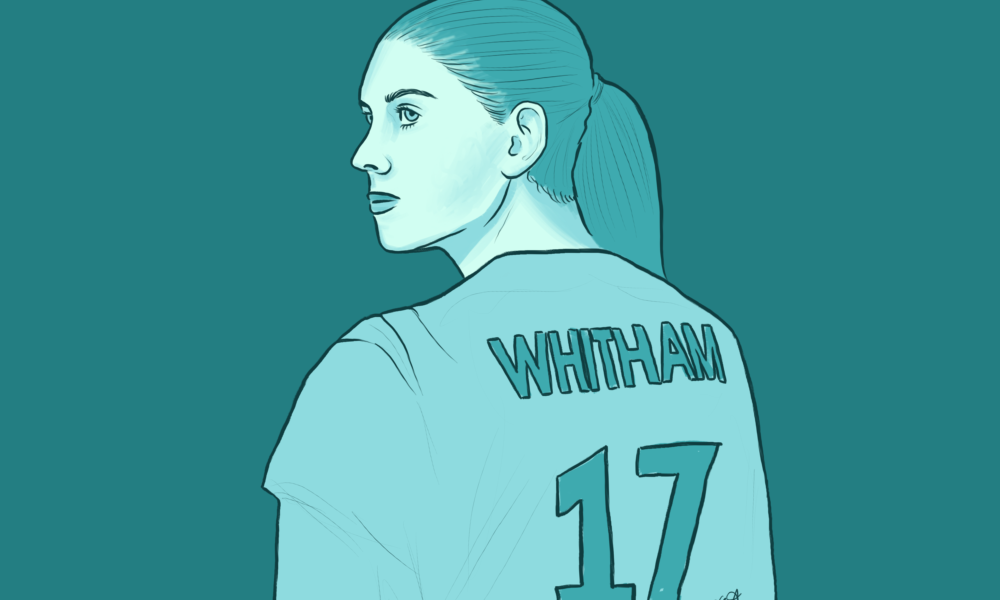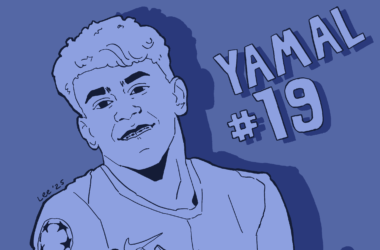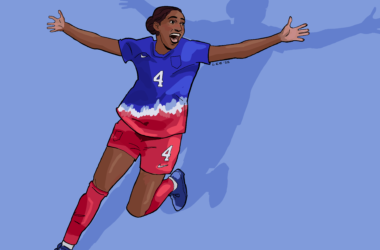At just 14 years old, McKenna (Mak) Whitman has made history as the youngest player to ever appear in a National Women’s Soccer League (NWSL) match. She debuted for NJ/NY Gotham FC in their 2025 season opener against the Seattle Reign. A rising star in women’s soccer, Whitham has been a standout talent from a young age, earning recognition for her exceptional skills on the field. Signed just before her 14th birthday in July, she not only became the youngest player in NWSL history but also became the youngest athlete in any sport to sign a name, image, and likeness (NIL) deal with Nike.
Whitman’s rapid progress as a professional athlete reflects a broader trend in the NWSL—more young players are breaking into the league, and there are currently over a dozen athletes featured on rosters this season who are under the age of 18. Whitham’s record-breaking debut depicts both the increasing opportunities for young talent and the new demographic of the sport.
However, Whitham’s debut also sparks an important discussion about whether the NWSL’s current policies provide enough support for young players. The league has established safeguards—including pediatric medical evaluations, safety assessments, and long-term development plans—to help athletes who are under 18 transition into the professional scene.
Despite these measures, fans and parents have concerns. Competing in such a physically demanding league against experienced professionals presents risks, from physical injuries to mental and emotional fatigue. A 2019 study found that 35 per cent of elite athletes experience burnout, depression, and anxiety. While these young players receive structured support, managing education alongside a professional career, and handling the pressures of early commercialization are pressing issues.
The increasing presence of young athletes in professional sports raises concerns about whether players are being pushed into the spotlight too soon. While early talent development is crucial in competitive sports, the pressure of performing at a professional level as an adolescent can have lasting effects on an athlete’s physical, mental, and emotional well-being. The transition from youth soccer to the NWSL is not just about skill level but also about handling media attention, sponsorship deals, and the weight of audience expectations. With a plethora of different media platforms using their name as a buzzword and the inevitable negative criticism that comes with this career path, it is easy to see how this could negatively affect an athlete’s mental health.
With 13 minor players joining the NWSL since 2024, it is evident that the youth are starting to make their mark on the league. While athletic success at such a young age is a remarkable achievement, it often allows players to put less focus on their academic careers as they know they can secure their future through athletics. This approach may seem pragmatic but it is not without its risks: If the athlete gets injured or is dropped from their team, they would not have the safety net of higher education to use as an alternate path. The NWSL must take the protective measures needed to ensure that young players’ studies are also prioritized, alongside their athletic journey.
The NWSL and other leagues must continue refining their policies to strike a balance between fostering young talent and ensuring the players’ long-term well-being. Going forward, the fan community must appreciate not only the immeasurable talent of young athletes, but also recognize the hardships and added stress they endure. As a fanbase, it could be as simple as not engaging with any form of public scrutiny or criticism directed towards the athlete and being aware of the toll excessive media and attention can take on an individual. As the trend of younger players entering professional sports continues to grow, leagues, teams, and sponsors must see and take responsibility for the holistic approach needed to ensure young athletes’ well-being.









